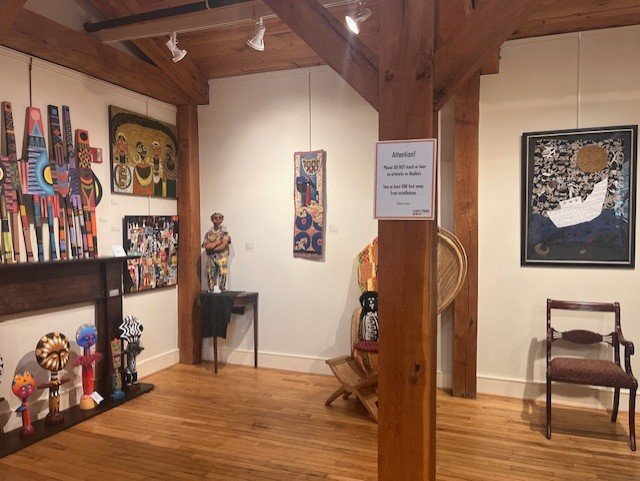The Museum has three galleries - the Dr. Bird Room, the Exhibition Hall, and the Farquhar Gallery - in which we present engaging and contemporary exhibitions by regional artists in a variety of media.
Open Call for Future Exhibitions
Are you interested in exhibiting your artwork in a museum setting?
Do you create works deeply rooted in cultural traditions and folklore?
Are you an artist who works across different media?
Are you passionate about sharing your cultural identity with diverse audiences?
If so, Sandy Spring Museum would love to partner with you.
Although we have closed submissions for 2026 exhibitions, you are warmly encouraged to submit your proposal for 2027 and beyond. We’re excited to learn about your expertise and artistic interests! Sandy Spring Museum connects diverse communities and advances social equity through shared an inspiring experience of our region’s cultural heritage. We are dedicated to supporting artists from diverse cultural backgrounds, especially those working within the traditions of folklore and community storytelling.
If this aligns with your artistic mission, whether you're interested in a solo exhibition (featuring 30–50 pieces) or participating in a group show (we’ll thoughtfully pair your work with others), we invite you to submit a proposal. Sandy Spring Museum would be honored to help curate and showcase your work as part of our commitment to celebrating folklore and cultural heritage through the arts.
Important note: If you have exhibited a solo show in one of our main galleries within the past seven years, we kindly ask that you allow space for other artists and consider submitting a proposal after the seven-year mark.
We look forward to receiving your proposal. Please contact exhibit coordinator Yu Jie with questions.
What is Folk Art?
Folk art is defined as the traditional art, literature, knowledge, and practice that is disseminated largely through oral communication and behavioral examples. Every group with a sense of its own identity shares folk traditions.
Folk art is any decorative, musical, or practical art that is related to a group of people from a specific location. It is art that is produced by a group of people who utilize traditional techniques that are handed down to them from previous generations. Within folk art, there’s a strong focus on historical continuity.
Folk art is handmade, decorative, utilitarian, and is made by and for the people. It expresses a cultural identity through showcasing cultural aesthetics, values, and social issues.
Many folk artists are self-taught or are trained through apprenticeships or by others in the community.
What is Social Equity?
Social equity means all community members feel empowered to participate, prosper, and engage in unmediated expression. We recognize that systemically disenfranchised groups of people are often misrepresented, underrepresented, and encounter barriers to cultural heritage experiences and resources. The Museum is committed to redressing these injustices by advancing social equity through the fair, just, and equitable management of our resources and the commitment to promote fairness, justice and equity in our programming.
Additional considerations
We prioritize exhibitions that fill all three galleries. This is estimated to be about 40-50 works but could differ depending on the type of exhibition and the size of the works. We can accommodate two- and three-dimensional works. Please no repeat exhibiting artists from within the past seven years.
Please find the floorplans HERE.




